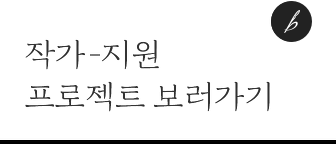[외신] 미국의 경고 라벨이 의미 없는 이유
CNBC에서 전한 뉴스이다.

경고 라벨은 제품 사용의 잠재적 위험에 대해 소비자에게 알리기 위해 고안되었지만, 너무 널리 퍼져 있어 그다지 유익하지 않다.
밴더빌트 대학교의 법학, 경제학, 경영학 석좌 교수인 W. 킵 비스쿠시는 “1960년대까지만 해도 경고 라벨은 매우 드물었다.”라고 말한다. “1960년대 중반부터 담배에 경고 라벨이 붙기 시작했다. 그 이후로 다른 제품들도 담배의 경험을 모방하려고 노력하면서 그 뒤를 따랐다.”라고 덧붙였다.
경고 라벨은 일반적으로 “이 제품은 구강암을 유발할 수 있습니다”라고 적힌 담배 상자 라벨과 같이 소비자에게 제품 구매를 경고하는 라벨과 “이 가구가 넘어지는 것을 방지하려면 벽에 영구적으로 고정해야 합니다”와 같이 제품의 잘못된 사용과 관련된 위험에 대해 경고하는 라벨의 두 가지 형태로 제공된다.
연구자들이 지적한 문제 중 하나는 경고 라벨이 어디에나 있는 것처럼 보이기 때문에 사람들이 경고 라벨에 둔감해진다는 것이다.
“경고에 대한 저의 주된 불만 중 하나는 경고가 너무 보편화되었다는 것입니다.”라고 비스쿠시는 말한다. “어떤 물건이 위험하다고 말하면서 경고 문구를 붙이는 경향이 있는데, 그렇게 되면 다른 경고 문구의 영향력이 희석되는 경향이 있다. 따라서 슈퍼마켓에 있는 모든 상품이 위험하다고 표시되어 있으면 무엇을 사야 할지 알 수 없다.“라고 말했다.
비스쿠시는 효과적인 경고 라벨을 위한 두 가지 기준을 개발했다.
1) 소비자에게 새로운 정보를 제공해야 하고, 2) 소비자가 그 정보를 신뢰할 수 있어야 한다는 것이다.
“기업이 재정적 이해관계에 반하는 진술을 할 때, 이는 신뢰할 수 있는 경향이 있다.”라고 비스쿠시는 말한다.
특정 제품에 경고 라벨을 부착하는 것에 대한 반발이 있었다. 2022년 12월, 연방 판사는 미국 식품의약국이 담배 회사에 담배에 그래픽 경고 라벨을 부착하도록 요구할 수 없다는 판결을 내렸다.
소비자 보호 옹호자들은 사람들이 제품을 안전하게 사용할 수 있도록 하기 위해서는 경고 라벨이 최후의 수단이어야 한다고 말한다.
컨슈머리포트의 정책 자문위원 오리엔 신은 “일반적으로 경고그림만으로는 효과적이지 않다.”라고 말한다. “경고 라벨은 안전한 설계와 결합되어야 한다.”라고도 말했다.
그래서 제품 설계의 안전 계층 구조가 필요한다. 이는 소비자에 대한 위험을 제거하기 위한 다단계 프로세스이며, 이것이 불가능할 경우 안전장치를 통해 위험을 최소화한다.
예를 들어 잔디깎이처럼 잠재적으로 위험한 제품은 사용자가 레버를 당기고 버튼을 누를 때만 시동이 걸리도록 하는 것이 안전장치의 한 예라고 신 대표는 설명한다.
안전 계층 구조의 마지막 단계는 경고 라벨이다.
“지난 한 주 동안 수백 개의 경고 라벨을 보았을 텐데, 우리는 아마 그 중 하나도 기억하지 못할 것이다.”라고 신은 말한다. “경고 라벨에만 의존하는 것은 문제입니다. [경고 라벨]은 케이크의 장식일 뿐입니다.”라고 말하기도 했다.
기사원문 : CNBC (2023.7.23) <Why most consumers ignore warning labels>
Warning labels are designed to inform consumers about potential risks of using a product, but they have become too prevalent to be beneficial.
“Warning labels really were fairly rare until the 1960s,” said W. Kip Viscusi, a distinguished professor of law, economics, and management at Vanderbilt University. “Beginning in the mid-1960′s, cigarettes started to have a warning label. Since that time, other products have followed suit, trying to emulate the cigarette experience.”
Warning labels generally come in two forms: those that warn the consumer against buying the product, such as a cigarette box label that says, “This product can cause mouth cancer,” and those that warn about the risks associated with incorrect use of a product and may say, “To prevent this furniture from tipping over, it must be permanently fixed to the wall.”
One of the problems researchers have pointed out is people are desensitized to warning labels because they seem to be everywhere.
“One of my main complaints about warnings is that they’ve become ubiquitous,” Viscusi said. “There’s a tendency to say things are risky [and] slap a warning on it, and that tends to dilute the impact of the other warnings that are out there. So if everything in the supermarket is labeled as dangerous, you don’t know what to buy.”
Viscusi has developed two criteria for effective warning labels: 1) they must provide new information to consumers, and 2) the consumer must find the information credible.
“When companies are making statements against their financial interest, that would tend to be credible,” Viscusi said.
There has been pushback against putting warning labels on certain products. In December 2022, a federal judge ruled that the U.S. Food and Drug Administration cannot require tobacco companies to put graphic warning labels on cigarettes.
When it comes to making sure people are using products safely, consumer protection advocates say warning labels should be a last resort.
“In general, warning labels by themselves [are] just not effective,” said Oriene Shin, policy counsel at Consumer Reports. “They really need to be coupled with safe design.”
That’s where the safety hierarchy of product design comes in. This is a multistep process meant to eliminate risk to the consumer, and when that’s not possible, minimize it through safeguards.
An example of a safeguard, Shin says, would be requiring a potentially dangerous product such as a lawnmower to only start if the user pulls a lever and presses a button, rather than only requiring one of those procedures.
The last tier of the safety hierarchy is a warning label.
“I have probably seen hundreds of warning labels in the last week, and we probably don’t remember any of them,” Shin said. “And that’s the problem with just relying on warning labels. [They’re] the icing on the cake rather than the end all be all.”



